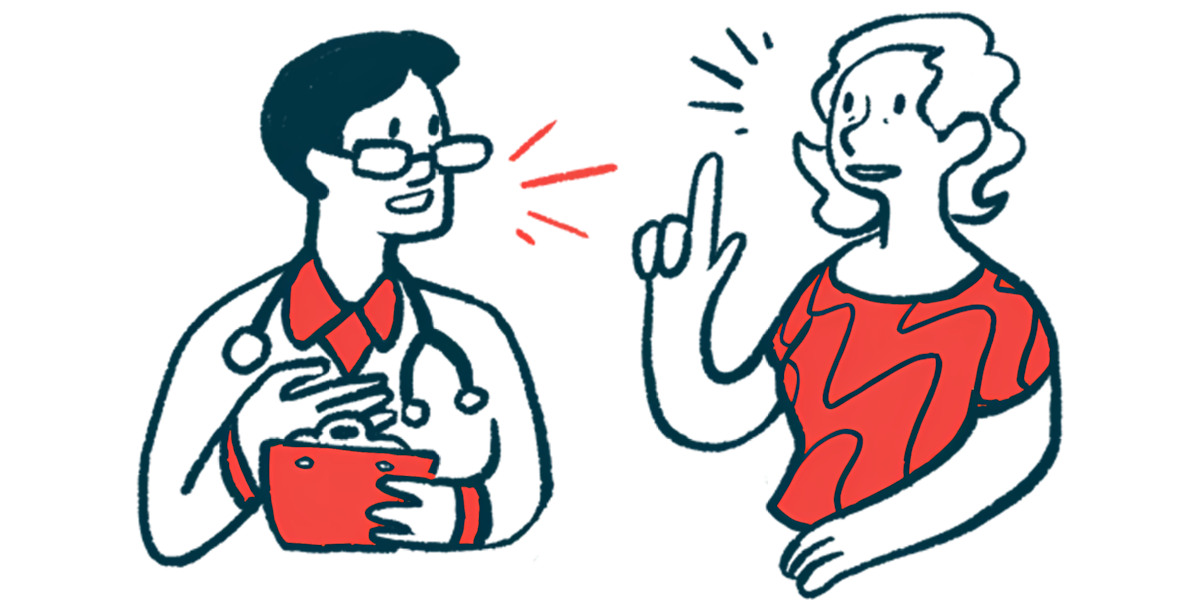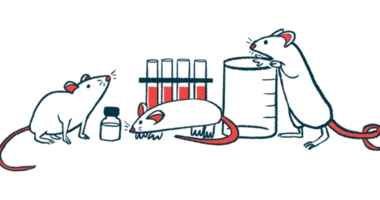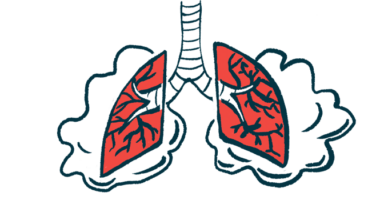Inspiratory muscle training, aerobic exercise aid lung function in MG
Researchers tested 6-week training program against standard therapy

A six-week program that combines inspiratory muscle training (IMT) and aerobic exercise may improve respiratory function in adults with myasthenia gravis (MG), a study in Taiwan shows.
Those who followed the training showed strengthened respiratory muscles, improved lung function, reduced breathlessness, and enhanced physical fitness over those who received standard therapy alone.
“Based on our findings, we recommend the integration of an individualized IMT training strategy into respiratory rehabilitation programs for MG patients,” the study’s researchers wrote. The study, “Inspiratory muscle training and aerobic exercise for respiratory muscle strength in myasthenia gravis post-hospitalization- a randomized controlled trial,” was published in BMC Pulmonary Medicine.
MG is an autoimmune disease wherein self-reactive antibodies disrupt the communication between nerve and muscle cells. This leads to muscle weakness and fatigue that particularly affect the voluntary muscles, including those in breathing. As a result, respiratory complications such as inspiratory and expiratory muscle weakness, shortness of breath, ineffective cough, and increased risk of respiratory failure are major concerns in MG.
While standard treatment typically involves pharmacological agents such as Mestinon (pyridostigmine bromide) and immunosuppressive therapies, growing evidence suggests that respiratory muscle training may offer additional benefits for respiratory function and physical performance. While studies show respiratory muscle training can provide long-term benefits with mild to moderate MG, “the efficacy of short-term approaches remains uncertain,” the researchers wrote.
IMT training, aerobic exercise vs. standard therapy
Here, researchers evaluated whether a six-week, moderate-intensity program combining IMT and aerobic exercise could improve lung function, respiratory muscle strength, and physical fitness in 54 MG adults with lung disease after a hospitalization due to an acute exacerbation. The study was conducted at Kaohsiung Chang Gung Memorial Hospital in Taiwan in 2018.
Twenty-six participants received a structured home-based training program, while 28 received their standard therapy without additional interventions. Most were women and a large number in both groups had a history of smoking. The average age was about 55 in the training group and 56 in the control group. At the study’s start, both groups were similar in terms of overall health and MG severity. On average, they’d been living with MG for about 11 years.
The IMT intervention involved using a handheld threshold loading device with a mouthpiece that made it harder to breathe in to help strengthen the breathing muscles. The patients followed a guided routine twice a day, practicing controlled inhalation and periods of rest to build respiratory muscle endurance. This was combined with daily light aerobic exercise, such as interval walking, and breathing exercises.
At the start, the resistance was set to 30% of each person’s maximal inspiratory pressure (MIP), a clinical measure of how strong inhalation muscles are, and was gradually increased to 45% at six weeks.
Both groups improved in breathing strength, breathlessness, and walking ability. The training group reported significantly greater gains, however, with less breathing difficulty and scores in the modified Borg scale falling by an average of 1.50 points compared with 0.82 points in the control group. The scale measures the severity of breathlessness during physical activity, with higher scores indicating greater difficulty breathing. They also walked an average of 107.9 meters farther, while the control group improved by only about 26 meters.
Gains in muscle strength, lung function
Only the training group showed a significant increase in expiratory muscle strength (MEP), the pressure produced when forcefully breathing out. On average, their MEP improved by 20.8 centimeters of water pressure (cm H₂O), a unit used to show how strong the breathing muscles are. The control group improved by just 1.4 cm H₂O.
“[W]hen a patient performs IMT training, the process of repeated respiratory loading not only strengthens the inspiratory muscles … but also encourages the expiratory muscles … and their endurance to participate in active expiration, which further improves the overall respiratory function,” the researchers wrote.
Lung function also improved more in the training group. Forced vital capacity (FVC), a measure of the total amount of air a person can forcefully exhale after a deep breath, increased by 0.21 liters (L), while the control group showed a slight decrease of 0.06 L. After adjusting for age, sex, and height, the training group’s FVC increased by 6.17% of the predicted value over a 1.79% decrease with the controls.
The training group also showed a significant gain in forced expiratory volume in one second (FEV₁), which is the air exhaled forcefully in the first second of a breath, increasing by an average of 0.19 L over a slight decrease of 0.05 L in the control group. When adjusted for age, sex, and height, this difference wasn’t statistically significant, however.
“The combination of moderate-intensity interval IMT [plus aerobic exercise] would be an effective strategy for post-hospitalization recovery, potentially enhancing long-term respiratory function and quality of life,” the researchers wrote. “Implementing IMT as an early intervention following hospital discharge may benefit patients with MG.”







